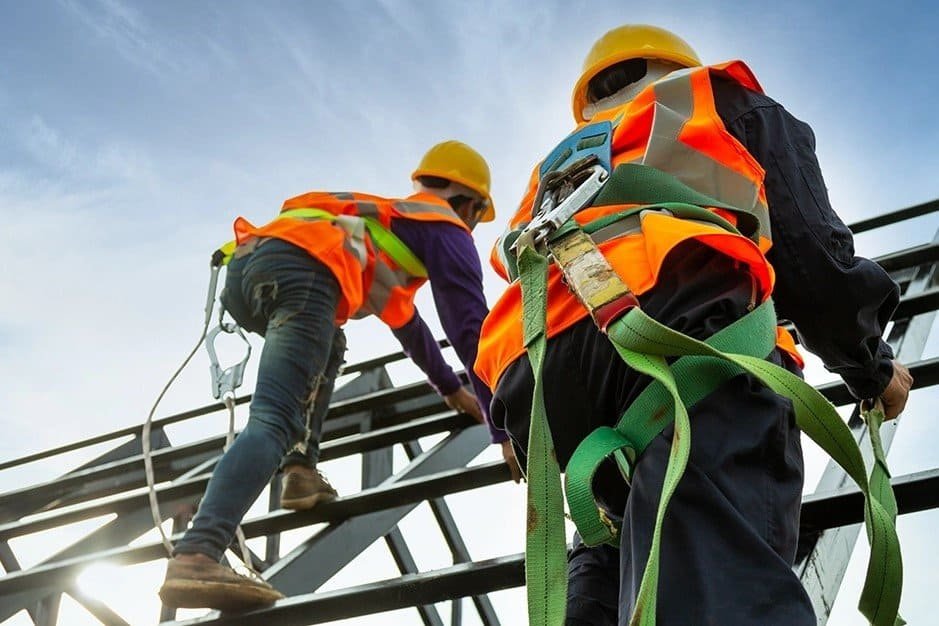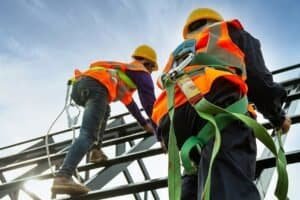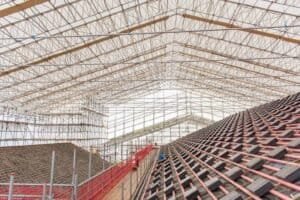Введение
Работа на высоте в строительной отрасли по своей природе сопряжена с риском. Независимо от того, устанавливает ли ваша бригада леса, выполняет ли она техническое обслуживание или поднимается на высокие конструкции, вероятность падения остаётся одной из самых серьёзных опасностей. Именно здесь без продуманной стратегии защиты от падения не обойтись. Хотя ограждения…, сети безопасности, и другие пассивные средства часто являются вариантами первой линии, однако во многих случаях эти меры нецелесообразны или нецелесообразны. В таких ситуациях правильно реализованная система индивидуальной защиты от падения с высоты (PFAS) играет решающую роль в защите работников от серьёзных травм или более серьёзных последствий.
В этой статье рассматриваются три ключевых компонента системы защиты от несанкционированного доступа (PFAS) — от носимого снаряжения до конструкции креплений — и объясняется важность каждого элемента. Для производителей, подрядчиков и монтажников лесов понимание этих компонентов важно не только для соблюдения требований, но и для эффективного управления рисками и поддержания культуры безопасности на объекте.
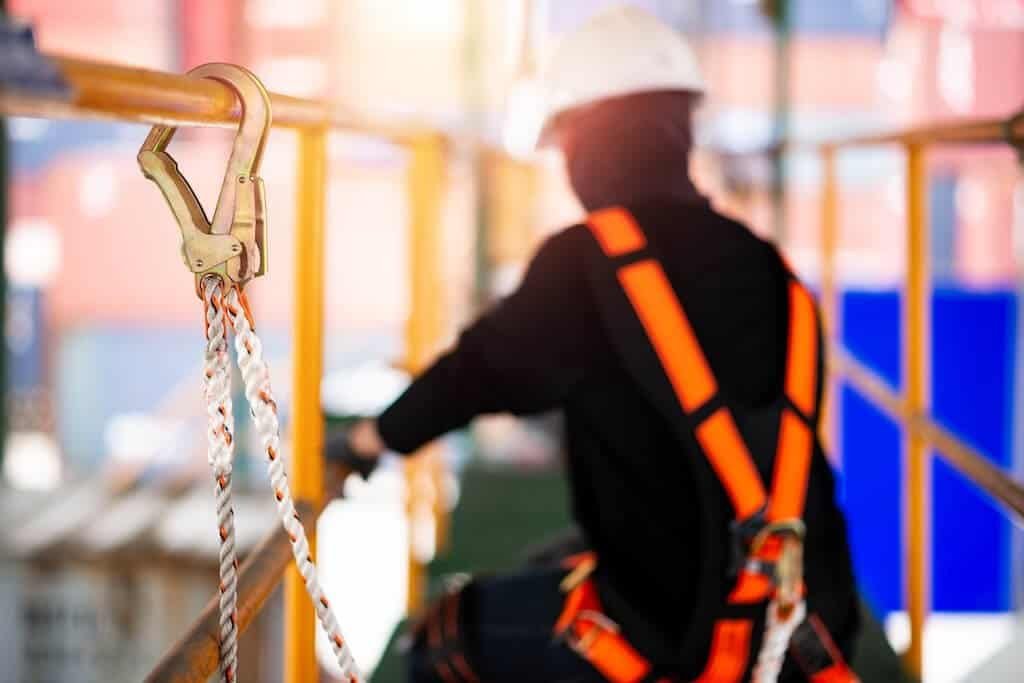
Что такое индивидуальная система защиты от падения?
Индивидуальная система защиты от падения (ИСЗ) — это система оборудования, предназначенная для безопасной остановки падения работника до того, как он столкнётся с препятствием или опорой на нижнем уровне. Она обычно используется, когда другие средства защиты от падения (например, ограждения или страховочные сетки) нецелесообразны или не могут быть использованы для выполнения поставленной задачи.
Система PFAS состоит из трёх основных компонентов, которые должны работать вместе: страховочная привязь, соединительные элементы и точка крепления. Пренебрежение одним из компонентов может поставить под угрозу эффективность всей системы. Работники, использующие PFAS, должны делать это под наблюдением компетентного лица, которое может выявлять, оценивать и контролировать риски падения, а также обеспечивать правильную установку и использование системы.
Компонент 1 – Полная страховочная система
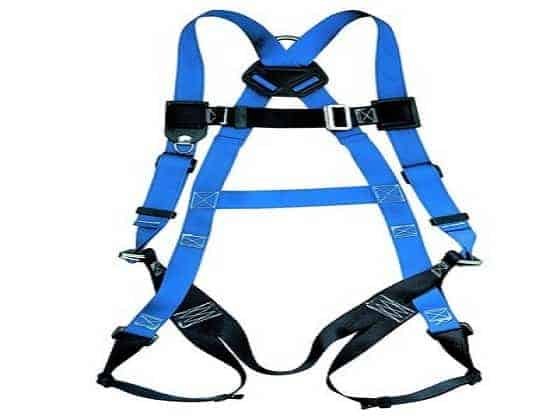
Что это такое
Страховочная привязь — это надеваемая часть системы PFAS. Она надевается работником и служит связующим звеном между ним и системой защиты от падения. Страховочные пояса (пояса) больше не считаются подходящими для защиты от падения, поскольку они концентрируют нагрузку на узкой части тела, увеличивая риск выскальзывания и получения более серьёзных травм.
Почему это важно
При падении на работника и систему действуют значительные силы: сила тяжести, ускорение, замедление и удар. Страховочная привязь распределяет эти силы на плечи, бедра и таз, снижая вероятность серьёзных травм. Она также обеспечивает вертикальное положение работника в подвешенном состоянии, что безопаснее для спасательных работ и помогает избежать травм, связанных с подвешиванием.
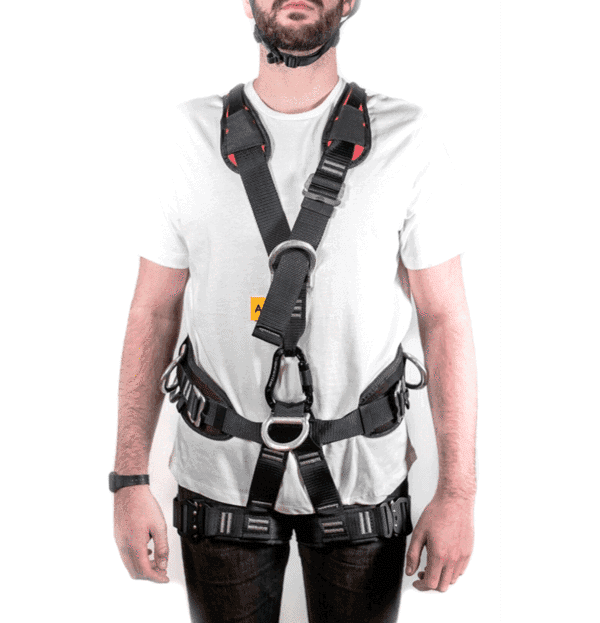
Ключевые требования
Полная страховочная привязь должна:
- Распределить тормозящие силы по всему телу
- Удерживайте пользователя в вертикальном положении после падения
- Ограничить максимальную силу торможения до 1800 фунтов (приблизительно 8 кН)
- Включайте держатели или приспособления для контроля свободных концов ремней и предотвращения запутывания
Убедитесь, что все указанные или поставленные страховочные привязи соответствуют международным стандартам (например, EN 361 в Европе, ANSI/ASSP Z359 в США) и совместимы с соединительными средствами и точками крепления, используемыми на месте.
Компонент 2 – Связующие средства
Определение
Соединительное устройство соединяет страховочную привязь с точкой крепления и играет ключевую роль в определении высоты падения и безопасной остановке падения. Существует два основных типа: страховочный строп и самовтягивающийся страховочный строп (SRL).
Как он ограничивает высоту и силу падения
- Ланплощадка: Короткий гибкий трос, проволочный канат или лента с соединительными элементами. Некоторые тросы оснащены амортизаторами для снижения силы торможения. Стропы должны быть не длиннее 6 футов (примерно 1,8 м), иметь устройство замедления и выдерживать минимальную нагрузку на разрыв 5000 фунтов (2227 кг).
- Самовтягивающийся страховочный трос (SRL): Автоматически убирается в корпус, ограничивая расстояние свободного падения до 60 см или менее. Страховочные тросы должны выдерживать минимальную нагрузку на разрыв 1360 кг.
Соединительные элементы (D-образные кольца, карабины, карабины) должны быть одинакового размера и конструкции, а их замки должны выдерживать нагрузку не менее 3600 фунтов. Карабины и карабины должны быть самоблокирующимися или с двойной блокировкой, чтобы предотвратить выскакивание.
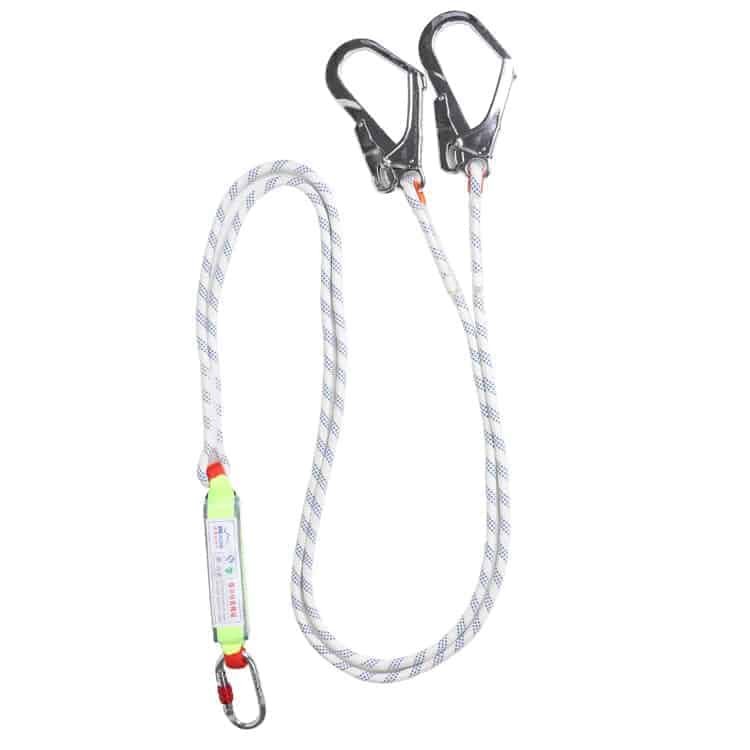

Заявка на подрядчиков по монтажу лесов и строительству
При проектировании систем доступа, таких как строительные леса или опалубка, выбор правильных средств соединения имеет решающее значение. Если падение с размахом или наличие препятствий представляют проблему, страховочные стропы с вертикальным креплением (SRL) дают преимущества благодаря меньшей высоте падения. Стандартных строп может быть достаточно, если они соответствуют требованиям к длине, амортизации и креплению. Работники должны быть обучены правильному использованию и проверке этих устройств.
Компонент 3 – Точка крепления
Что считается якорной стоянкой
Точка крепления — это фиксированная или полуфиксированная точка, к которой крепится соединительное средство. Она должна выдерживать нагрузку, создаваемую устройством защиты от падения, и должна быть установлена независимо от временной рабочей конструкции. Обычно используются стальные конструкционные элементы.
Требования к конструкции/нагрузке
Каждая точка якорной стоянки должна:
- Выдерживать минимальную прочность на разрыв 5000 фунтов (приблизительно 22 кН) на человека
- Устанавливаться в соответствии с проектными требованиями, выдерживающими предполагаемую нагрузку
- Быть независимым от выполняемой работы
- Быть расположенным так, чтобы ограничить свободное падение до высоты не более 6 футов, если только это не предусмотрено специально
- Расположитесь так, чтобы минимизировать опасность падения при повороте
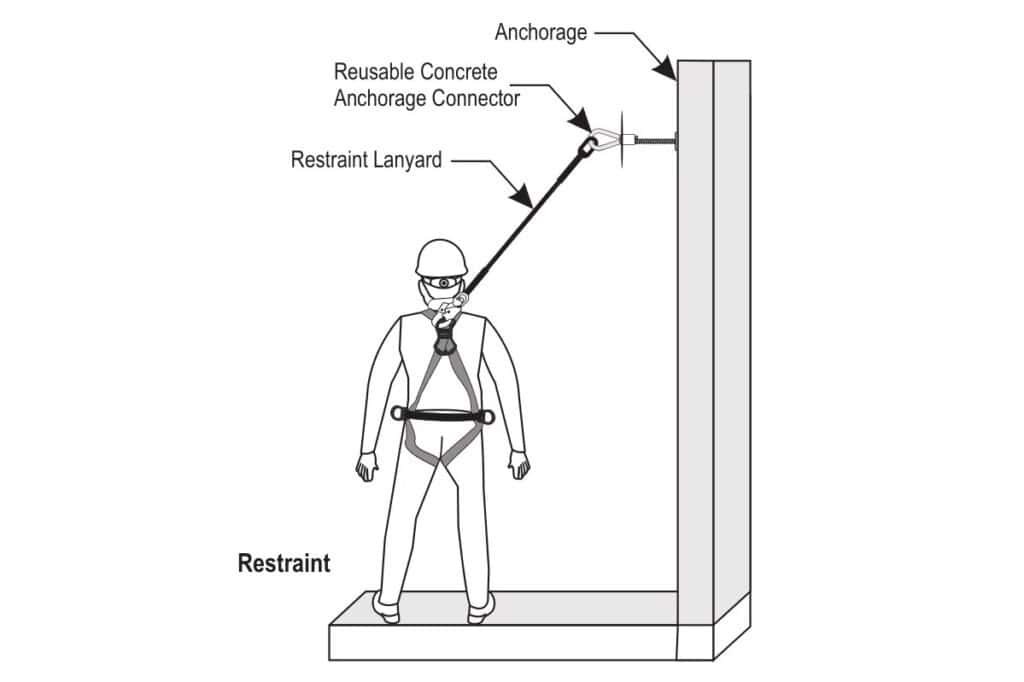
Практические соображения
При строительстве и монтаже лесов проектирование анкерных креплений часто представляет собой сложную задачу. Убедитесь, что в лесах или конструкции имеется специальная сертифицированная точка крепления. Избегайте использования труб, поручней или несертифицированных компонентов. При планировании спасательных работ также необходимо учитывать расположение анкерных креплений, чтобы обеспечить своевременное извлечение застрявших рабочих.
Интеграция ПФАС в вашу программу защиты от падений
Система PFAS должна быть частью более широкой стратегии защиты от падений, особенно когда пассивные меры неэффективны. Ключевые моменты:
- Компетентное лицо: Уполномочено применять меры защиты от падений и предпринимать корректирующие действия
- Обучение и инспекция: Рабочие должны быть обучены; оборудование должно проверяться ежедневно и периодически.
- Планирование спасения: Длительное отстранение может привести к травме — планируйте своевременную помощь
- Оценка: Оцените высоту падения, падение с размахом и препятствия перед использованием системы.
- Документация и соответствие: Убедитесь, что компоненты соответствуют таким стандартам, как ANSI Z359 или EN 795, и ведите записи
Производителям лесов следует убедиться, что их системы оснащены сертифицированными точками крепления и совместимы со стандартным оборудованием PFAS. Планировка лесов должна обеспечивать как доступ, так и защиту от падения.
Заключение
- Система PFAS включает в себя страховочную привязь для всего тела, соединительные средства и точку крепления.
- Каждый компонент должен соответствовать стандартам конструкции и нагрузки.
- Крепление должно быть прочным, правильно расположенным и независимым от временных рабочих конструкций.
- Использование должно контролироваться компетентным лицом; работникам необходимо обучение и планирование спасательных работ.
- Проектирование лесов должно включать требования PFAS для обеспечения безопасности и соответствия нормативным требованиям.
Часто задаваемые вопросы
Могу ли я использовать страховочный пояс вместо полной страховочной привязи для защиты от падения?
Нет. Страховочные пояса больше не принимаются для защиты от падения. Для распределения нагрузки и удержания работника в вертикальном положении требуется полная страховочная привязь.
Какова максимальная высота свободного падения, разрешенная согласно PFAS?
Как правило, система должна предотвращать свободное падение с высоты более 6 футов, если это специально не предусмотрено. SRL ограничивают это расстояние до 2 футов или менее.
А что, если рабочий во время падения натолкнется на какой-нибудь предмет?
Используйте страховочное устройство с регулируемой высотой (SRL) для уменьшения высоты падения и минимизации риска падения с размаха. Правильное расположение креплений также имеет решающее значение.
Насколько прочной должна быть точка крепления?
Якоря должны выдерживать нагрузку не менее 5000 фунтов (22 кН) на одного прикрепленного человека.
Как это применимо к системам строительных лесов?
Убедитесь, что ваши леса оснащены сертифицированными точками крепления и совместимы со страховочными обвязками и страховочными канатами. Планировка лесов должна поддерживать интеграцию системы PFAS.


